SUMMARY
This is AI generated summarization, which may have errors. For context, always refer to the full article.
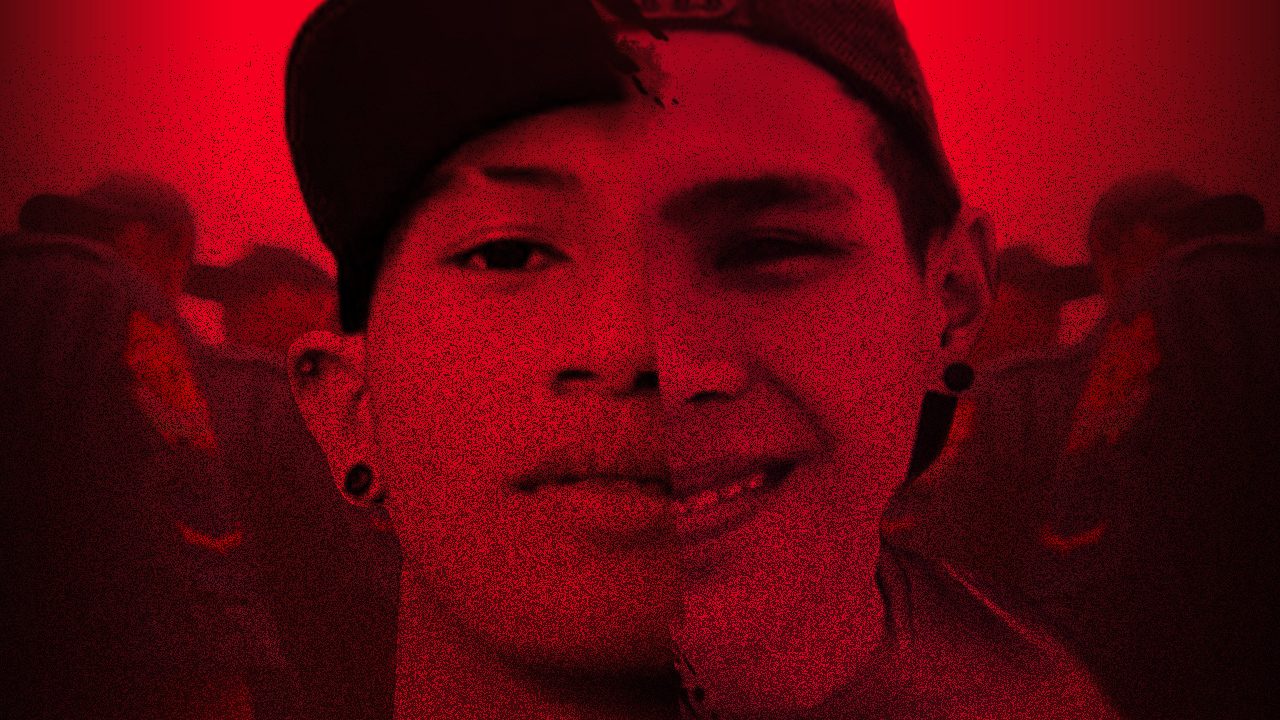
MANILA, Philippines – Seventeen-year-old Jerhode Jemboy Baltazar lived in a humble community near a river in Barangay NBBS Kaunlaran in Navotas City.
Almost part of his routine after waking up in the morning, he would ask for money to buy breakfast then spend the rest of the morning outdoors, often bonding with friends and playing basketball. By noontime, Jemboy would return home to share lunch with his family.
The teener stopped school when he was Grade 10, but intended to resume and finish at some point in the future. He opted to work as a fisherman, but aspired to become a seafarer to help his parents. He cared for his family and made sure they got a portion of his earnings from fishing.
Jemboy was a loving son and a protective brother to his two elder sisters. He was sweet, affectionate, and compassionate to his family. Even though he was the youngest among the siblings, Jemboy served as his sisters’ knight in shining armor.
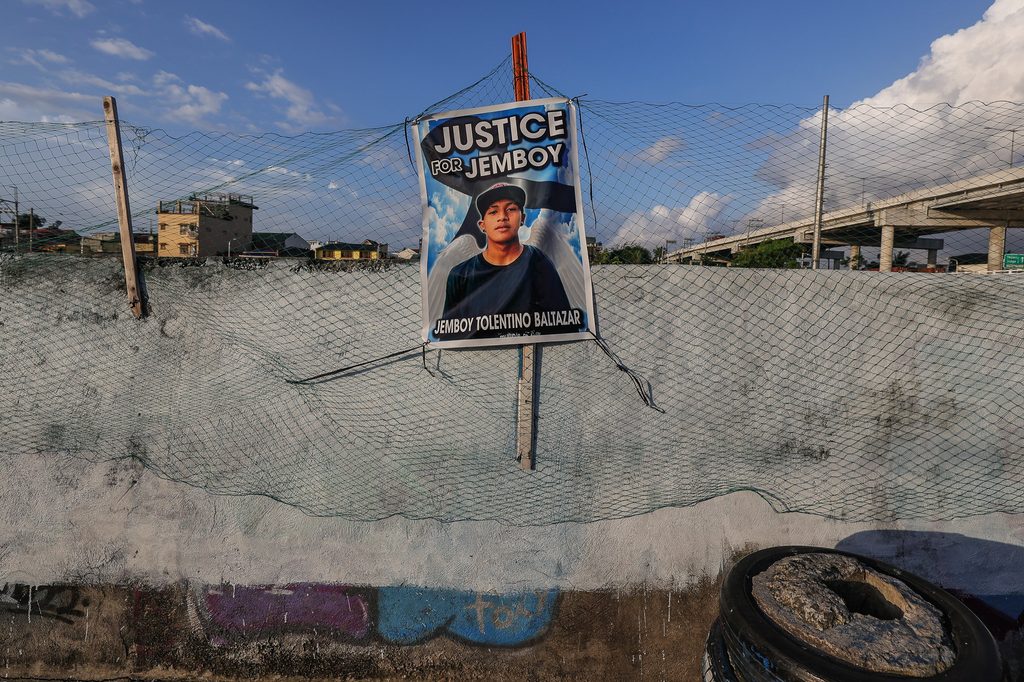
“Kumbaga pagka magkasama po kami niyan, ta’s parang sa tingin niya mababastusan siya [sa ibang tao sa ginagawa sa amin], ginagawa po niya, pinagsasabihan niya po ‘yong tao (Whenever we were together, and he thought other people were being rude to us, he would call that person out),” Jessa, Jemboy’s eldest sister, told Rappler.
Beyond his sisters, Jemboy looked to his two nephews and would play, if not walk with them, around their neighborhood to bond with them.
All these would change.
Killed in broad daylight
August 2 seemed to be a normal day. Jemboy did his usual routine, according to Jessa, but on that particular day, he planned to go fishing after prolonged inclement weather.
Jessa said they were waiting for her brother to come home at noontime as he normally would, but there was no sign of him. They went ahead and had finished their lunch when a neighbor came with dreadful news. Jemboy had been shot by the police.
Devastated by the report, they rushed towards the river, just a few meters away from their home. It was about 2 pm when Jessa and her family reached the river and confirmed their worst nightmare: Jemboy had been killed.
Jessa pieced the story about her brother’s killing – while Jemboy and his friend were cleaning their boat, cops arrived looking for their target. After firing an initial warning shot in the water, they fired succeeding shots at the teenager. Jemboy’s friend tried to hug him to try to help him, but the teenager pushed his friend to save him from being shot, Jessa narrated. Shortly after, Jemboy fell into the water after sustaining gunshot wounds.
Cops would later find out that Jemboy was not the target of their operation. The police were looking for suspects involved in a shooting incident in the village, and received information that one of the suspects allegedly boarded a boat, according to Navotas City police chief Police Colonel Allan Umipig.
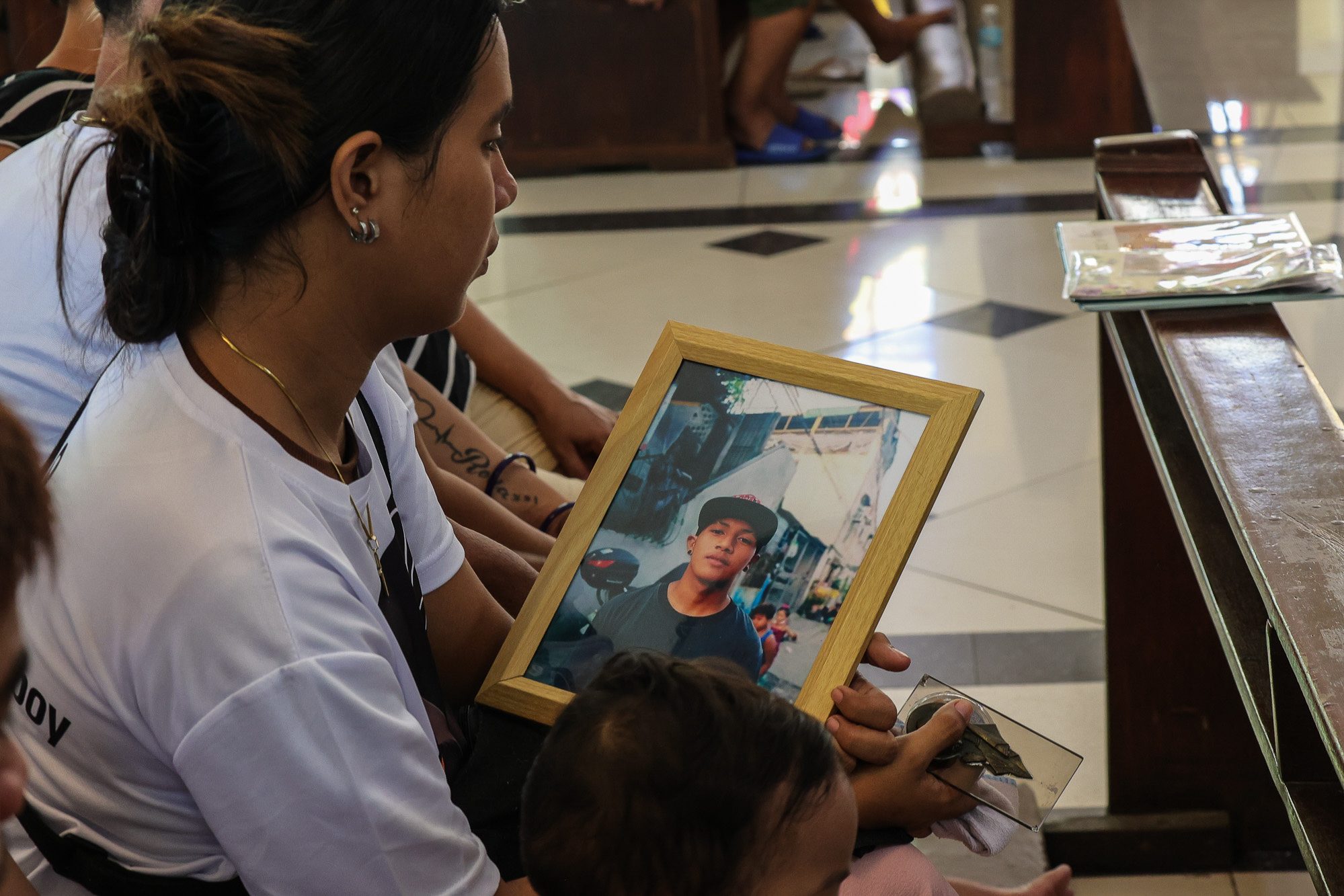
Jemboy’s body lay submerged in the water for three hours – his remains were recovered only at 5 pm after a relative spent hours diving in the river.
Jessie, the teenager’s father, cradled his son’s lifeless body atop a makeshift boat or balsa. Tears, confusion, and sorrow overwhelmed Jessie, as the rest of the community watched. The scene was captured on video, which made the rounds online.
Jemboy died from brain injuries after sustaining a gunshot wound in the head, according to forensic pathologist Dr. Raquel Fortun, who examined the teenager’s body. Drowning was obviously a contributing factor, too.
The six police tagged in the killing were detained at the Navotas City police station and are facing a complaint for reckless imprudence resulting in homicide.
Over 20 cops have also been relieved, and administrative charges have been filed against more cops in relation to Jemboy’s killing. The Philippine National Police Internal Affairs Service (PNP IAS) announced on Tuesday, August 15, that they had recommended the relief of Umipig from his post after an alleged cover-up. He will also face administrative charges.
‘Second Kian’
On Wednesday, August 16, loved ones, friends, and people calling for justice brought Jemboy to his final resting place. His burial coincided with the sixth anniversary of Kian delos Santos’ killing in Caloocan City in 2017.
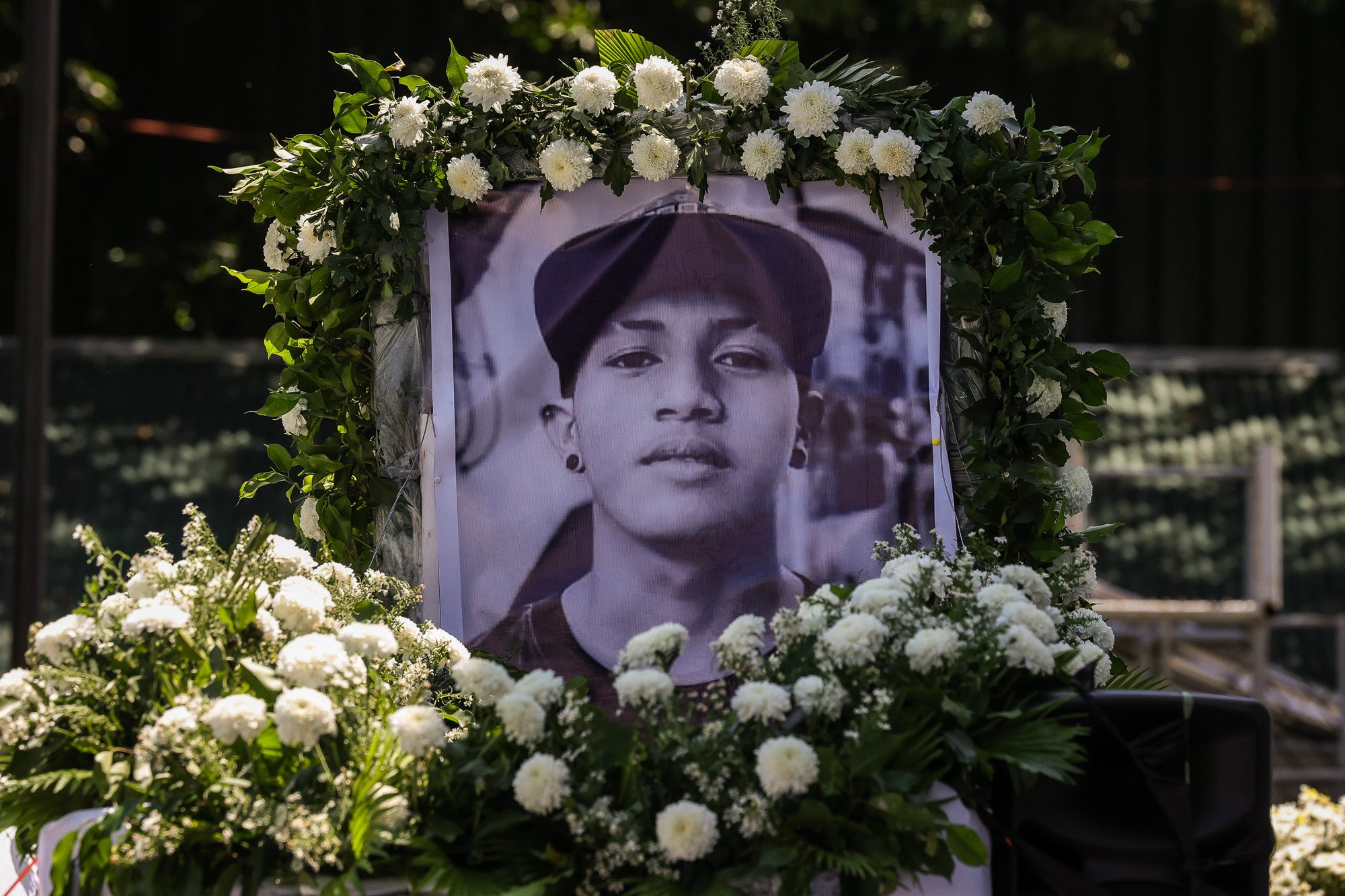
Kian’s own kin saw uncanny similarities between Kian and Jemboy. Kian’s uncle Randy said the two cases were identical in that both teenagers were innocent, defenseless, and were brutally killed by the police.
“So ‘yun, itinuring ko sa ‘kin [na] pangalawang Kian delos Santos ito. Labimpitong [taong] gulang na may pangarap na inalisan nila. Gusto nga mag-seaman no’ng bata eh para makatulong sa pamilya nila. Ang nanay, OFW (Overseas Filipino Worker) din. So magkahawig na kuwento, parehong labimpitong gulang na pinatay sa kamay ng mga pulis,” Randy said.
(So there, I regard Jemboy as the second Kian delos Santos. Two 17-year-olds whose dreams were crushed by the police. Jemboy wanted to become a seaman to help his family. His mother was an OFW too. So similar stories, both 17 years old, killed by cops.)
After Kian’s death, Randy started working with other families of drug war victims through the St. Arnold Janssen Kalinga Center, led by activist-priest Fr. Flavie Villanueva. Randy said he and Villanueva were the first ones to respond to Jemboy’s family after learning about his killing. Villanueva said they got in touch with the teenager’s family on August 3 – just a day after the tragedy.
On August 5, Fortun conducted an autopsy on Jemboy’s body. Villanueva and Randy also helped the family get in touch with JM Canlas’ family, the young actor who passed way recently. The actor’s casket was donated to Jemboy.
“Nakakalungkot ito, ‘di ba? Hanggang kailan bago tigilan ang mga patayan? Napakaraming menor-de-edad ang pinatay…at kailan magtatanda [ang mga awtoridad] dahil papaano na lang kung walang tumutok dito?” Randy asked. “Ano’ng gagawin nila para wala nang ikatlong Kian?”
(This is so tragic isn’t it? When will the killings stop? There have been so many minors killed. And when will authorities learn their lesson, because what would happen if no one monitors these killings? What will the government do to prevent a third Kian?”)
Killings, after killings, after killings
After former president Rodrigo Duterte launched his drug war seven years ago, the country witnessed ruthless killings committed by the police. The word “kill” became common in Duterte’s speeches, and it translated into policy that targeted the most vulnerable sectors.
Innocent individuals were killed, even those who had nothing to do with the drug war or the police. (READ: Six years of blood and violence: People we lost under Duterte)

For Maria Ela Atienza, a professor of political science at the University of the Philippines-Diliman, Jemboy’s killing again showed that “police operations continue to have problems,” and that “human rights and rule of law are not always observed.” Atienza also believes Duterte caused this violence because he tolerated and encouraged this culture of killing.
Human Rights Watch (HRW) senior researcher Carlos Conde shared the same view and said that the Duterte administration did not only normalize state violence, but even institutionalized it.
“But make no mistake: this violent culture that manifests in how the police conducts itself was always there,” Conde added.
How to explain the behavior of the PNP? The problem is not the lack of discipline, he said, but “the total absence of accountability for serious abuses.”
“It doesn’t take a genius to know that if you let someone get away with bad conduct, they will keep repeating it. The certainty of investigation, prosecution, and conviction is extremely important. Without that, things won’t change.”
Can the police still be fixed?
Conde, who has years of experience researching and reporting about human rights abuses, said the police have shown that they are “incapable of making serious, significant changes.” He added that oversight and accountability mechanisms should be put in place with the help of intervention from the legislature.
There are some measures that Congress and the Senate can implement, aside from public hearings, according to Conde. “Why have they not considered taking the whole PNP to account, for example by cutting its budget if they can? There is clearly some leverage that legislators can use to compel accountability – why is this not happening?”
Conde also raised concerns over the supposed non-reaction of some international actors like foreign governments and international institutions to the gross human rights violations committed by the police.
He said international bodies can show their outrage by withholding aid or stopping any program that sends cops to study or pursue careers abroad.
President Ferdinand Marcos Jr. has inherited the fruits of his predecessor’s bloody and violent policies. Unlike Duterte, Marcos has projected an image that shows some regard for human rights – but killings still persist under his watch.
For Marcos to show genuine concern about police reform, Atienza said “there will [have to] be cases filed against all police involved or suspected of involvement, and more reforms will [have to] be introduced in the justice system.”
Meanwhile, for Conde, the problem with the PNP is not a question of resources, discipline, or training, but of justice.
“This is a question of impunity – police behave this way because they know they can get away with it. So, before Mr. Marcos does anything, he must first ensure that those who commit violations are punished in accordance with the law,” Conde explained. – Rappler.com
Add a comment
How does this make you feel?
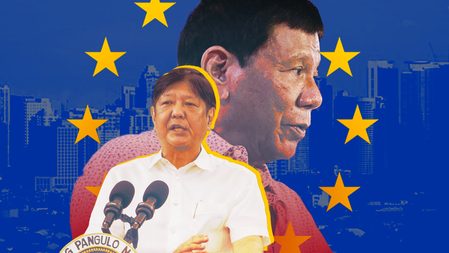
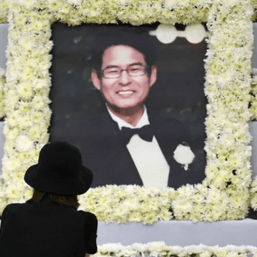

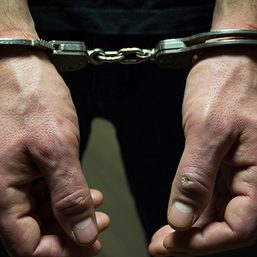









![[The Slingshot] Lito Patay’s 4 hours and 38 minutes of infamy](https://www.rappler.com/tachyon/2024/07/Lito-Patay-4-hours-infamy-July-19-2024.jpg?resize=257%2C257&crop=233px%2C0px%2C720px%2C720px)
There are no comments yet. Add your comment to start the conversation.